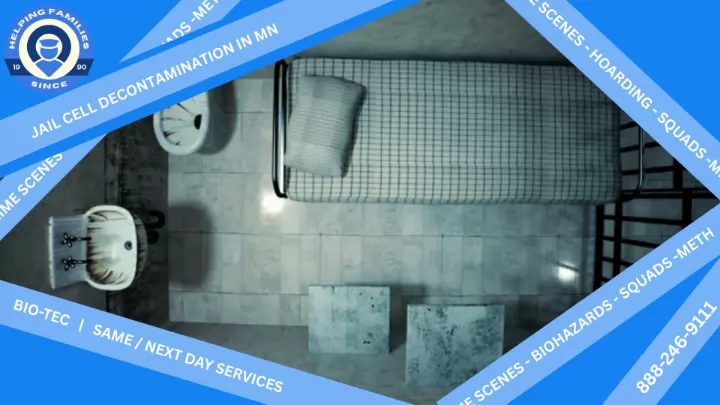The Importance of Professional Meth Lab Testing and Cleaning Services Methamphetamine production and use have surged in recent years, leading to an increase in clandestine meth labs. These labs pose significant health, safety, and financial risks to families and communities. Ensuring that affected properties are properly tested and cleaned by professionals is paramount to safeguarding well-being and restoring property value. Table of Contents Understanding Methamphetamine Contamination Health Impacts on Families Safety Concerns in Contaminated Properties Financial Implications of Meth Lab Contamination The Necessity of Professional Testing and Cleaning Steps in Professional Meth Lab Cleanup

Importance Of Professional Meth Lab Testing And Cleaning
The Importance of Professional Meth Lab Testing and Cleaning Services Methamphetamine production and...
The Importance of Professional Meth Lab Testing and Cleaning Services Methamphetamine contamination poses serious health risks and environmental hazards. Professional Meth Lab Testing and cleaning services are essential to ensure safety, compliance, and peace of mind for affected properties and communities. Table of Contents 1. Introduction 2. Risks of Meth Lab Contamination 3. Benefits of Professional Meth Lab Testing and Cleaning Services 4. Frequently Asked Questions 5. Conclusion Introduction Methamphetamine production leaves behind dangerous chemical res

The Importance Of Professional Meth Lab Testing And Cleaning Services
The Importance of Professional Meth Lab Testing and Cleaning Services Methamphetamine contamination...
What causes the smell of decomposition in a house or vehicle?
The distinctive and highly unpleasant smell of decomposition, whether in a house or vehicle, is primarily caused by the biological breakdown of organic matter by bacteria and other microorganisms. This process releases a complex mixture of volatile organic compounds (VOCs) and gases. When a living organism dies, its cells begin to break down (autolysis), and then microorganisms (primarily bacteria from the gut, but also environmental bacteria and fungi) begin to consume the tissues. This process, known as putrefaction, produces a cocktail of odorous chemicals. Key compounds responsible for the characteristic smell include: Cadaverine and Putrescine, aptly named for their association with decaying flesh, are polyamines that give off a putrid, rotten odor. Hydrogen sulfide, known for its rotten egg smell, and various other sulfur-containing compounds like methanethiol (rotting cabbage) and dimethyl disulfide/trisulfide (garlic-like) are also prominent byproducts of bacterial activity. Ammonia and methane are also released as decomposition progresses. The specific profile and intensity of the odor can vary depending on factors such as temperature, humidity, oxygen availability, the type of organic matter, and the presence of insects. In a house, this could be from a deceased animal in a wall, a neglected food spill, or an unattended death. In a vehicle, moisture ingress combined with organic debris (e.g., forgotten food, spilled drinks, tracked-in dirt) creates an ideal environment for microbial growth, leading to these same putrefactive odors within the enclosed space of the cars interior. Understanding these chemical byproducts is crucial for selecting the most effective odor removal strategies, which aim to neutralize or eliminate these specific compounds rather than simply masking them.
How should biohazards be handled after a detainee with a contagious illness?
Immediate vehicle decontamination with specialized disinfectants is necessary.
How do professionals stay updated on the latest cleaning techniques?
Ongoing training, industry conferences, certification renewal courses, and professional networks help keep skills current.
What measures are applied when vomit contaminates police vehicle air circulation systems?
Air systems are cleaned thoroughly, including filters, to eliminate both biohazards and odors.
How do professionals clean floor mats contaminated with pathogens?
Floor mats are removed, cleaned with pathogen-specific disinfectants, and thoroughly dried before reinstallation.
Can pigeon droppings damage vehicles?
Yes, the acidic content can eat away at paint and metal surfaces if not cleaned promptly.
What actions are required when biological materials affect vehicle-mounted weapon systems?
Weapon systems are disinfected carefully to remove pathogens and ensure secure functionality.
What happens if urine seeps into the vehicle’s flooring material?
Flooring is cleaned, disinfected, and, if necessary, replaced to restore safety.
What training is needed for biohazard cleaning professionals?
Training includes bloodborne pathogen courses, hazardous material handling, and safety protocols.
Is meth testing covered by insurance?
Coverage for meth testing and remediation depends on your insurance policy. Some policies may cover these services, especially if contamination occurred during a covered event. Its important to review your policy and consult with your insurance provider to understand your coverage.
HOME > blog > Meth Lab Testing > riverlea > oh
